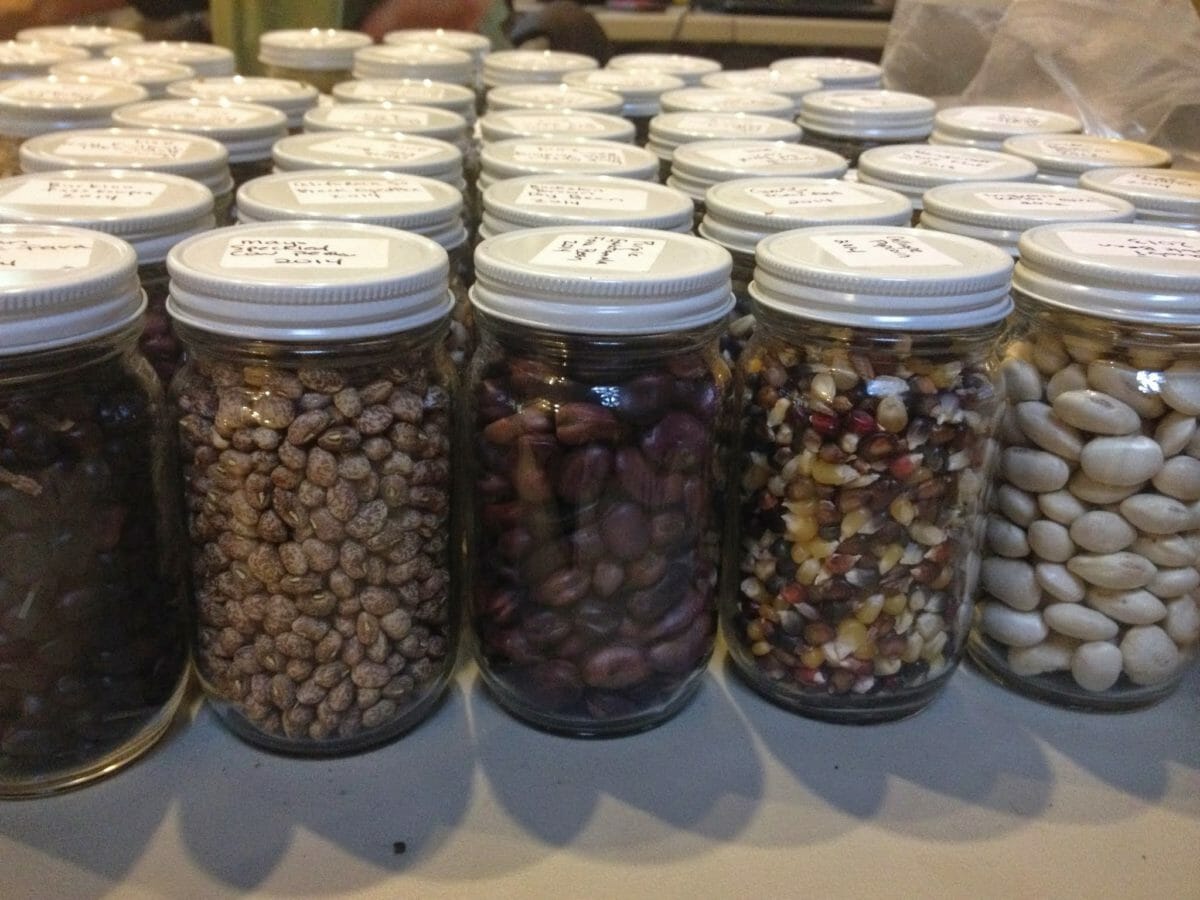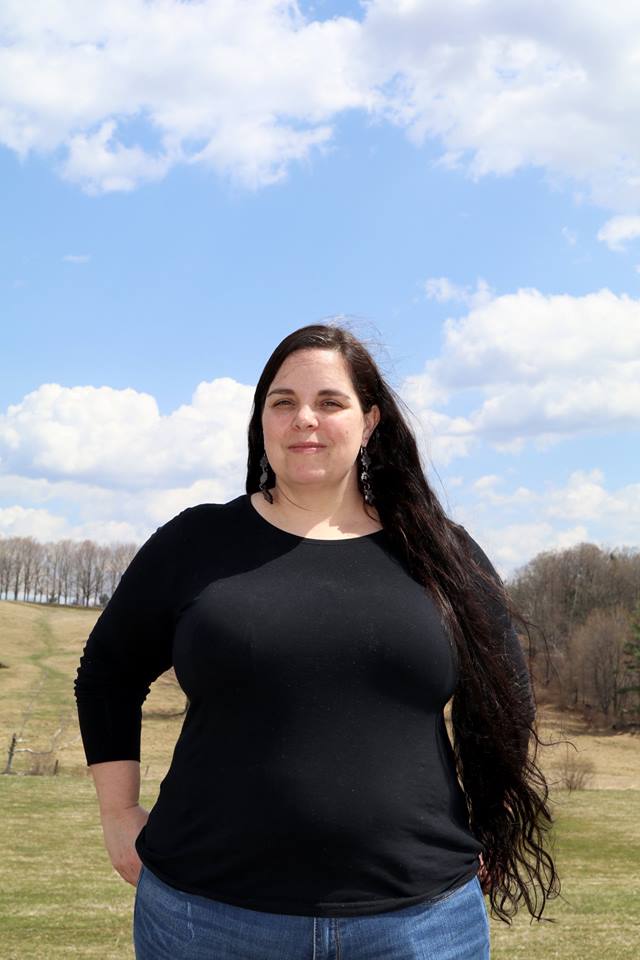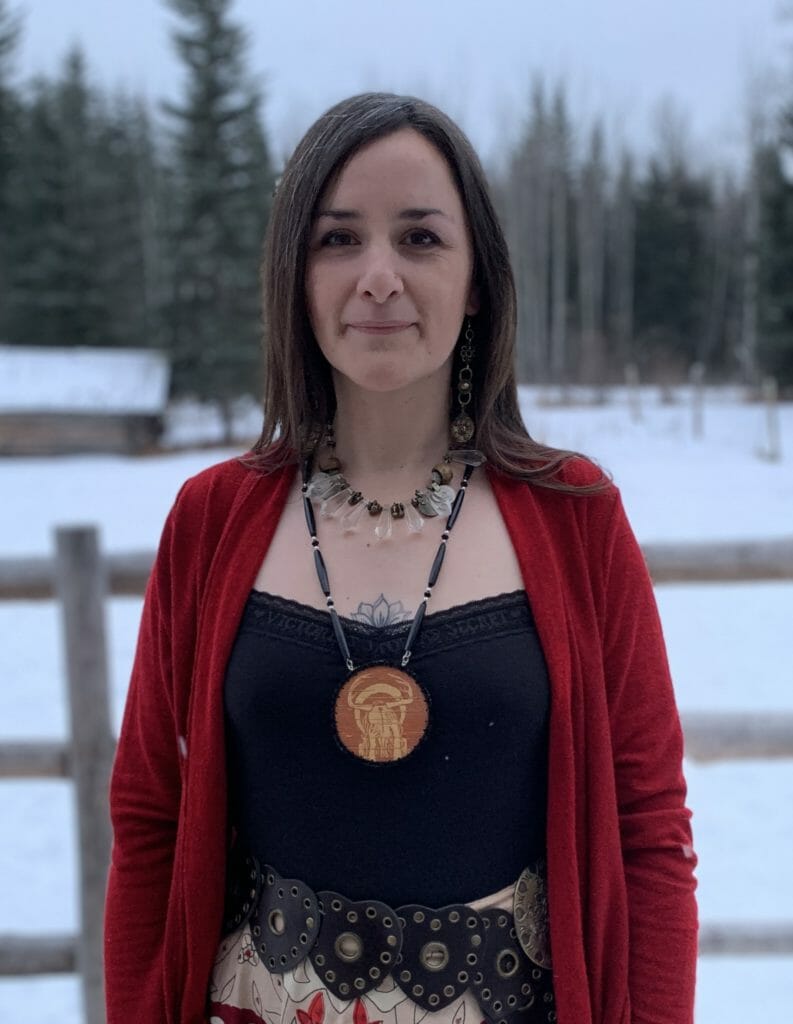The Seed Saving Descendants
Four Indigenous seed savers share their wisdom on the sacred practice.
The Seed Saving Descendants
Four Indigenous seed savers share their wisdom on the sacred practice.

Save your seeds.by Rowen White
You can’t grow a garden without seeds.
Long before the regenerative agriculture movement started preaching the value of seed saving, the practice was a crucial part of growing food and environmental stewardship for Indigenous peoples.
To learn more about this vital tradition, Modern Farmer spoke with four Indigenous farmers: Rowen White, a member of the Mohawk community of Akwesasne and founder of Sierra Seeds, Jessika Greendeer, a seed keeper, a member of Ho-Chunk Nation and farmer at Dream of Wild Health in Minnesota, Tiffany Traverse a Secwépemc seed steward at 4th Sisters Farm in British Columbia, Canada and Liz Charlebois, a seed saver of the Abenaki tribe who is based in Vermont. The four women, who are working to preserve the work of their ancestors, offered some advice and wisdom to the new gardeners who have emerged since the pandemic hit on best practices.

Modern Farmer: How is seed saving helping us move towards a more resilient food system?
Rowen White: If you want to be able to grow a garden year in and year out, you have to have a really stable seed source. By saving the seeds, they are continuing to adapt to your particular soil, your climate, your weather and the land. They become a reflection of the region that you live in. In the end, you grow a better garden that way.
Jessika Greendeer: This past year, seed houses had to close their doors because of the demand and essentially were just selling to commercial growers. Seed saving was the only way to garden and be self-sufficient. The life of that seed, whether it’s something ancestral or open pollinated is also something to connect with, a beautiful connection to the plants or to the Earth that you reside on.
Tiffany Traverse: People need to realize that we need to save seeds and allow them to adapt to our changing climate, flood, drought, disease and everything else. And, you know, if not, these shortages of seed we saw when the pandemic happened are just going to happen likely in the future.
Liz Charlebois: These are the seeds that our ancestors have been taking care of for tens of thousands of years. It’s important to continue to preserve the life of that crop, but also especially because over the last 100 to 50 years, the world’s number of available food crops have become extinct, largely because of big seed companies.

MF: A handful of large companies largely dominate the seed industry. How does this compete with the work that you and other seed keepers are doing?
RW: This is a trend that has really severed the relationship between humans and plants. People no longer engage in this co-evolutionary dance between humans and plants. It doesn’t serve us, we see seeds as a reflection as of the beautiful diversity of our Indigenous peoples, but this also takes away agency and creates dependency on a very small number of multinational corporations to provide basic needs and resources.
JG: My own personal belief is that whomever you believe created the Earth, or however it evolved into existence, nature created something very perfect. That’s something that all of our ancestors had cultivated for thousands of years now. We need to take those seeds back into our own hands and grow them and make them more resilient to where they’re being grown.
TT: Their monocropping of food is definitely putting a huge barrier at our feet and in food diversity, which in turn is going to put a huge barrier to our health. I like to keep seeds as free access and in the public commons. They are living beings, they are our ancestors. They’re not meant to be commodified, but that’s what’s happened.
LC: In my community, our farmers are women because farming and seed keeping is an extension of life giving and that is historically a woman’s role. With the emergence of seed companies, the seed companies would get a hold of a seed, patent it, contract with big farmers and the farmers have to agree to not get their seed anywhere else and not save their own seeds. A lot of those seeds are also sterile, so you can’t save them.

MF: There has been an increased interest in gardening this year due to the pandemic. What advice do you have for these new gardeners?
RW: Observe and learn from the plants themselves in their full cycle and understand your role in respectfully saving seeds at the end of the season. There are a lot of seed companies that have integrity around Indigenous seed benefit sharing. Fedco Seeds, if a seed has Indigenous origin, they provide money back to the tribe of origin to support their food sovereignty.
JG: Pick crops that you know your family is going to consume on a regular basis and not that it’s impossible to do, but it’s incredibly difficult to save every single seed from the food you consume. The Organic Seed Grower by John Navazio is an amazing resource which gives you tips on wet fermenting seeds and dry harvesting seeds.
TT: Search out seeds that have been grown as close to their area that they’re growing in as possible. Check out your local seed library because that’s where people like myself donate seeds that I’ve been adapting.
LC: Know your crop and know if you want to save the seeds or eat them. Different foods and different crops, when they’re ready to eat, they may not be mature enough to save the seeds. For example, green beans, you want to eat them when they’re fairly young and tender. However, if you want to save the seeds, you basically want them to die on the vine.

MF: How do we strike a balance between non-Indigenous growers using heirloom or native crops, but still ensuring Indigenous growers and seed keepers are supported in their own food sovereignty?
RW: It comes down to getting educated on whose land they reside on, the seeds they are growing and how they can be mindful of the legacy and the generosity that comes from Indigenous people. We have a really deep relationship and cultural memory with the land. Often we just need access to land resources to revitalize that.
JG : If people want to support native organizations, the Native American Food Sovereignty Alliance helps cultivate relationships with seeds, but also educates up-and-coming chefs in our food system. Every single person or every single human being also has ancestors from somewhere, so I think it’s incredibly important for people to also learn who their ancestral seeds are, and learn how to cultivate those particular crops.
TT: That’s tough because a lot of us are still trying to figure out exactly what we need. And I think most of the networks that have been created to support seed change, for instance, Sovereign Seeds [in Canada], could use support. In this day and age we do need some financial support to get these programs running.
LC: With all the colonialization and genocide that happened here on the east coast, seeds were lost to the indigenous communities. I think of one example where this [non-Indigenous] family continued to grow [a particular seed]. Eventually, what ended up happening is that family returned those seeds to the Indigenous community. That stuff, respect and recognizing the importance of food sovereignty is super important.
Follow us

This work is licensed under a Creative Commons Attribution-NoDerivatives 4.0 International License.
Want to republish a Modern Farmer story?
We are happy for Modern Farmer stories to be shared, and encourage you to republish our articles for your audience. When doing so, we ask that you follow these guidelines:
Please credit us and our writers
For the author byline, please use “Author Name, Modern Farmer.” At the top of our stories, if on the web, please include this text and link: “This story was originally published by Modern Farmer.”
Please make sure to include a link back to either our home page or the article URL.
At the bottom of the story, please include the following text:
“Modern Farmer is a nonprofit initiative dedicated to raising awareness and catalyzing action at the intersection of food, agriculture, and society. Read more at <link>Modern Farmer</link>.”
Use our widget
We’d like to be able to track our stories, so we ask that if you republish our content, you do so using our widget (located on the left hand side of the article). The HTML code has a built-in tracker that tells us the data and domain where the story was published, as well as view counts.
Check the image requirements
It’s your responsibility to confirm you're licensed to republish images in our articles. Some images, such as those from commercial providers, don't allow their images to be republished without permission or payment. Copyright terms are generally listed in the image caption and attribution. You are welcome to omit our images or substitute with your own. Charts and interactive graphics follow the same rules.
Don’t change too much. Or, ask us first.
Articles must be republished in their entirety. It’s okay to change references to time (“today” to “yesterday”) or location (“Iowa City, IA” to “here”). But please keep everything else the same.
If you feel strongly that a more material edit needs to be made, get in touch with us at [email protected]. We’re happy to discuss it with the original author, but we must have prior approval for changes before publication.
Special cases
Extracts. You may run the first few lines or paragraphs of the article and then say: “Read the full article at Modern Farmer” with a link back to the original article.
Quotes. You may quote authors provided you include a link back to the article URL.
Translations. These require writer approval. To inquire about translation of a Modern Farmer article, contact us at [email protected]
Signed consent / copyright release forms. These are not required, provided you are following these guidelines.
Print. Articles can be republished in print under these same rules, with the exception that you do not need to include the links.
Tag us
When sharing the story on social media, please tag us using the following: - Twitter (@ModFarm) - Facebook (@ModernFarmerMedia) - Instagram (@modfarm)
Use our content respectfully
Modern Farmer is a nonprofit and as such we share our content for free and in good faith in order to reach new audiences. Respectfully,
No selling ads against our stories. It’s okay to put our stories on pages with ads.
Don’t republish our material wholesale, or automatically; you need to select stories to be republished individually.
You have no rights to sell, license, syndicate, or otherwise represent yourself as the authorized owner of our material to any third parties. This means that you cannot actively publish or submit our work for syndication to third party platforms or apps like Apple News or Google News. We understand that publishers cannot fully control when certain third parties automatically summarize or crawl content from publishers’ own sites.
Keep in touch
We want to hear from you if you love Modern Farmer content, have a collaboration idea, or anything else to share. As a nonprofit outlet, we work in service of our community and are always open to comments, feedback, and ideas. Contact us at [email protected].by Lindsay Campbell, Modern Farmer
November 15, 2020
Modern Farmer Weekly
Solutions Hub
Innovations, ideas and inspiration. Actionable solutions for a resilient food system.
ExploreExplore other topics
Share With Us
We want to hear from Modern Farmer readers who have thoughtful commentary, actionable solutions, or helpful ideas to share.
SubmitNecessary cookies are absolutely essential for the website to function properly. This category only includes cookies that ensures basic functionalities and security features of the website. These cookies do not store any personal information.
Any cookies that may not be particularly necessary for the website to function and are used specifically to collect user personal data via analytics, ads, other embedded contents are termed as non-necessary cookies.
good job…loved this article…
What a load of bunk. Extinct? Funny how she didn’t manage to name any. “Just get a hold of?” Nope, a lot more than that needs to happen before one can get a patent. Sterile? Another bit of baloney. Try proving the existence of sterile crops. Lotsa luck.